On the surface, the river otter and the massasauga rattlesnake would seem to have little in common. One is cute, furry and loves to frolic in the water. The other is reclusive, poisonous and hardly one of Illinois' cuddlier creatures.
What these two animals, and hundreds of other native species do have in common is that they've benefited from taxpayers' contributions to the Wildlife Preservation Fund. Since its establishment
16 years ago, the WPF has raised more than $3.43 million to enhance habitat and fund research and educational programs that benefit "non-game wildlife," another name for animals that cannot be legally hunted.
Although donations to the WPF can be made at any time of the year, the vast majority of contributions come from check-offs on the Illinois income tax forms. This year's forms contain six check-ons.
Taxpayers wishing to support the Wildlife Preservation Fund should check the box on Line 26a of the IL1040 form or line 10 of the Telefile form. There will be no 1040EZ form this year. Internet filers will also be able to support the fund. While taxpayers may contribute any amount they wish, the minimum donation is $ 1. Those who elect to support the fund will have their refund reduced or their taxes owed increased by the same amount as their donation.
Spending the money donated to the fund begins with the Illinois Wildlife Preservation Fund Advisory Committee, an 11-member lay panel that reviews grant applications submitted by groups and individuals from around the state. The committee usually recommends around 40 small projects (under $ 1, 000) and a handful of larger projects to DNR Director Brent Manning.
For Fiscal Year 2000, there will be 43 small projects and nine larger ones. The nine large projects include:
• $20, 000 to determine the movement and
Tax form check-off benefits Illinois' lesser-known critters.
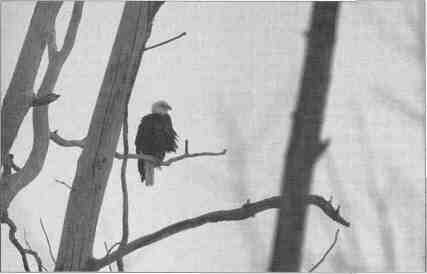
January/February 2000 | 39
OUR NATURAL RESOURCES
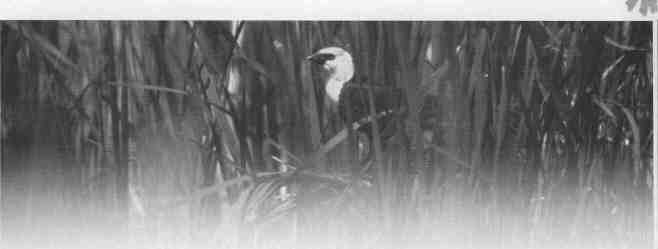
habitat use of the eastern massasauga rattlesnake in Clinton County. The snakes will be caught and fitted with radio transmitters that will track their movement from wetlands in the spring to the uplands and low-lying wet grasslands during the summer.
• $10,000 to conduct a qualitative and quantitative mussel bed study of select Mississippi River locations based on species number and diversity.
• $9,908 to study the ecology and population dynamics of the yellow-headed blackbird, a state-endangered species.
• $ 5,000 to develop and test biological control agents for the control of garlic mustard plants, an exotic species.
• $4,481 to conduct small mammal inventories at the Savanna Army Depot.
• $3,386 to conduct a site inventory of the Green River Conservation Area in Lee County.
• $3,000 to help restore prairie and wetland habitats at the McNabb Habitat Area in Walnut Point State Park in Douglas County.
• $2,900 to inventory the flowers at Mitchell's Grove Nature Preserve in LaSalle County.
• $2,768 to collect baseline vegetation data for use in restoring habitat at the Savanna Army Depot.
Vern Kleen, DNR Avian Ecology Program manager, said there were more than 60 applications submitted for smaller projects, with 43 approved at a total cost of $40,755.
Among them are $987 for an evaluation of Illinois cave amphipod habitat; $1,000 for the identification, current distribution and relative abundance of the cotton mouse; $750 for an outdoor classroom at Teutopolis Junior High School; $743 for a herpetological survey along the Illinois River; $988 to determine the status of the cricket frog in northern Illinois; and $ 1,000 for an insect survey at Siloam Springs State Park.
While me massasauga rattler study is among the big projects this year, the WPF in previous years has benefitted such species as the river otter, bald eagle, peregrine falcon, Blanding's turtle, great egret, sandhill crane, red-shouldered hawk and barn owl. All of them are listed as either endangered or threatened species in Illinois.
"Our efforts have paid off in either removing species from the lists or changing their status
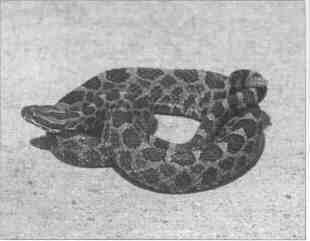
40 | Illinois Parks and Recreation
OUR NATURAL RESOURCES
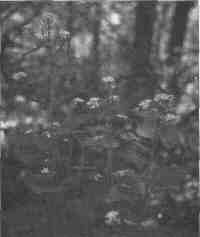
from endangered to threatened," said Carl Becker, chief of the DNR Division of Natural Heritage. "When we create habitat for wildlife, it helps their populations in the present, which is a strategy that's less costly than waiting until they become endangered in the future.
"The double-crested cormorant was once listed as endangered," Becker continued, "but the population has rebounded so well, thanks in part to the Wildlife Preservation Fund, that it's been completely removed from the list. The eagle, the otter, the sandhill crane and the red-shouldered hawk all went from endangered to threatened and may someday also be removed."
Becker said continued public support of the WPF is essential to the well-being of numerous species of animals. "These species may not be as well-recognized as deer, rabbits, geese or squirrels, but they are important pieces of our natural world and deserve our help. The best way to do that is by checking the boxes on the income tax forms," he said.
Those wishing to support the fund at other times of the year should write to the DNR Wildlife Preservation Fund, 524 S. Second St., Springfield, Ill. 62701-1787.
JOHN ALLEN
January/February 2000 | 41
OUR NATURAL RESOURCES
Snowmobile Trail Grants Awarded
Snowmobile trail grants totaling $94, 100 have been awarded to two local
"These grants will be used to purchase
The 10 counties that will benefit from
Grant recipients include:
• Lake County Forest Preserve District, $7, 000 to replace deteriorated tracks on a 1988 groomer used to maintain 25 miles of snowmobile trails.
• Oregon Park District (Ogle County), $ 13, 000 to purchase a 6 x 6 all-terrain utility machine with trail groomer attachments. The unit will
• German Valley Sno-Riders (Stephenson, Winnebago and Ogle counties), $6, 700 to purchase an eight-foot trail groomer drag to help
• Northwest Illinois Snowmobile Alliance (Stephenson and Jo Daviess
• Northwest Illinois Snowmobile Alliance (Stephenson, Jo Daviess,
• Region 5, Illinois Association of Snowmobile Clubs (DeKalb and Kane
• Region 6, Illinois Association of Snowmobile Clubs (Jo Daviess
•Spring Grove Sno-Grovers (McHenry County),
The snowmobile grants are administered by the
or by calling (217) 782-7481. Applications are 42| Illinois Parks and Recreation
Governor Announces First Purchase
Gov. George H. Ryan has announced the state is purchasing 1, 662 acres
"With this first land acquisition purchase, we begin the commitment
The newly acquired area will be used for lake fishing, wildlife habitat
The property is west of the town of Essex, along and north of County
Gebhard Woods State Park, Des Plaines Conservation Area, Gooselake
Commonwealth Edison approached the state Department of Natural
"When a corporation makes a contribution like that, it makes our Open
"Acquiring this property has been a high priority since we learned it was
The Illinois "Open Land Trust" is a $160 million program that will
DNR Waterfowel Committee
The DNR Waterfowl Hunting Advisory Committee is recommending
The 15-member statewide committee, comprised of five representatives of subcommittees in each of the state's three waterfowl hunting
In addition, the pane recommends that when the statewide allocation
The committee recommends that the Department, in updating its
three-year harvest data, not include geese harvested in excess of quota.
To monitor Canada goose hunting in Illinois, the committee recommends that the Department retain the monitoring system in place for the
In the Southern Illinois Quota Zone, commercial operators are required
The recommendations of the statewide Waterfowl Hunting Advisory January/February 2000 | 43
Conservation Congress
Seventy regional delegates have been elected
Modeled after the legislative process, the Conservation Congress brings
Congress participants work to resolve a variety of natural resource issues
Park District Representatives
Statewide delegates:
Bruce Larson, Illinois Association of Park Districts
Craig Hubert, Illinois Association of Conservation Districts
Reid Bateman, Illinois Park and Recreation Association
Regional delegates
Regional Delegates
William Tookey, Addison Park District
Judy Beck, Glenview Park District
Bert Gray, Oswegoland Park District
Nancy Wroblewski, Schaumburg Park District
Ken Kutska, Wheaton Park District
Mary Ochsenschlager, St. Charles Park District (alternate)
Reman HI
Bill Clevenger, Decatur Park District
Robin Hall, Urbana Park District
Book Review
The Waterfowel of Illinois
by Dr. Stephen P. Havera
When soldiers returned home from the Civil War, they put
That's just one tidbit of information you'll find when you
Havera, who has served as director of the Forbes Biological
Because of its numerous, high-quality wetlands, Illinois has
The Waterfowl of Illinois is a single-source encyclopedia of Illinois waterfowling. The first two chapters are worth the price of
Published by the Illinois Natural History Survey, The Waterfowl of Illinois is a coffee table book that will spend dozens of
The Waterfowl of Illinois is available at the DNR gift shop or
- by Outdoorlllinois editor Gary Thomas 44 ¦ Illinois Parks and Recreation
is a staff writer for Outdoorllimois, a publication of the Illinois
Department of Natural Resources. This article is reprinted with
permission from the January 2000 issue of Outdoorlllinois.
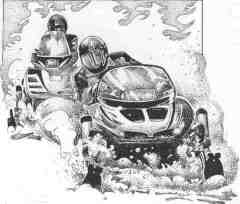
governments and six private snowmobile organizations to develop and
maintain public snowmobile trails in Illinois.
additional snowmobile trail grooming and
maintenance equipment, renovate existing equipment, post additional trail signs
and repair snowmobile bridges in 10
northern Illinois counties," Governor
George H. Ryan said in announcing the
grants.
the additional signs, improved trails and
new bridges are Carroll, DeKalb, Jo
Daviess, Kane, Lake, McHenry, Ogle,
Stephenson, Whiteside and Winnebago.
be used by the park district and the Black Hawk Snowblazers Club to
assist with trail development and maintenance, helping prepare and
maintain more than 100 miles of public snowmobile trails.
maintain 84 miles of public snowmobile trails.
counties), $20, 200 to purchase an eight-foot trail groomer drag, a
mower, and a seven-foot blade and to lease a 70 horsepower agricultural tractor. The implements will be used with the tractor to prepare
trails (including the 14.5-mile Jane Addams Trail) for snowmobiling
by mowing and shaping the trails prior to snowfall and for grooming
and maintenance during the snowmobiling season.
Carroll and Whiteside counties,) $30, 800 to purchase trail signs, posts,
lumber for bridges and gates to be used along the snowmobile trails
they maintain in the four counties.
counties,) $5, 000 to purchase a new trailer to transport their trail
groomer. The current trailer does not have an adequate gross vehicle
weight rating for the groomer.
County), $8, 600 for lumber and materials to replace five snowmobile
bridges destroyed by flooding earlier this year.
$2, 800 for signs to better mark their 17 miles of
snowmobile trails and for lumber and materials to
rebuild three bridges that cross small streams.
Illinois DNR. Application forms for the next round
of grants are available by contacting the DNR
Division of Grant Administration, Room 315,
524 S. Second St., Springfield, IL 62701-1787;
accepted from March 1 to May 1.
OUR NATURAL RESOURCES NEWS BRIEFS
Under the Illinois Open Land Trust
of park land in Kankakee County, the first such acquisition under his
landmark Open Land Trust initiative a program designed to acquire and
protect open space for future generations.
we need to make to save our open spaces," Ryan said. "This purchase will
improve the quality of life for the people of this community and for the
entire state."
and waterfowl hunting as well as other recreational activities. The parcel
contains numerous lakes and ponds with three large lakes. Nearly one
quarter of the total acreage is covered with water. Most of the land on the
parcel is wooded or covered with grass.
Highway 6. It is less than 1/2 mile from Mazonia Braidwood State Fish
and Wildlife Area and a number of state areas are within 15 miles, including: Heidecke State Fish and Wildlife Area, William G. Stratton State Park,
Prairie State Natural Area and Kankakee River State Park.
Resources about selling this land to the state. They agreed to sell the
property for several million dollars less than the fair market value of the
land.
Land Trust even stronger," Ryan said.
for sale," said DNR Director Brent Manning. "I'm grateful to the Governor for his efforts to make it happen."
provide $40 million per year over the next four years for land purchases
and improvements. The program provides state funding for land acquisition as well as a combination of grants and loans to local governments for
open space protection. All land acquired through this program is from
willing sellers only.
Likes Status Quo
retaining the current system of allocating and monitoring harvest during
the state's regular Canada goose season, with minor adjustments in allocations during years in which statewide allocations exceed 100, 000 geese.
zones (north, central and south), was charged with proposing allocations
and monitoring systems for the Canada goose hunting seasons beginning
in 2000. The committee recommends that the Department retain its
current method of using the most recent three years of Canada goose
harvest data to calculate each zone's allocation. In 1999, quotas as a percentage of the statewide allocations are 22.5 percent in the North Zone,
30.8 percent in the Central Zone and 46.7 percent in the South Zone,
based on 1995-1997 harvest data.
is 100, 001-125, 000 geese, the quota beyond the first 100, 00 birds
would be allocated as 25 percent to the North Zone, 35 percent to the
Central Zone and 40 percent to the South Zone. The number of birds in
the statewide allocation beyond 125, 000 in any year would be allocated
equally among the three zones (33 1/3 percent to each zone).
The panel did not want harvest averages skewed to benefit a zone or zones
in which hunters take more geese than allotted. The Department would
also continue to allocate geese within each of the three zones and distinguish between Mississippi Valley Population (MVP) migratory geese and
non-MVP geese to avoid overharvest of MVP geese.
1999-2000 season. It requires hunters who take geese in North and
Central quota zone counties to report their kill by midnight on the calendar day the geese are taken.
to report their harvest figures by midnight each Thursday night and
Sunday night during the season. Last year, they had until 3 p.m. on
Friday and 3 p.m. on Monday to report. In addition, commercial clubs
will be required to report their harvest daily when the Department determines that the quota is close to being reached. The committee also said it
would support other monitoring changes intended to reduce overharvest
or underharvest or to otherwise improve compliance accuracy.
committee have been forwarded to DNR Director Brent Manning.
OUR NATURAL RESOURCES NEWS BRIEFS
Delegates Elected
to the fourth Conservation congress. The delegates, elected during caucuses in each of five
regions of Illinois, will join 48 statewide delegates to advance key natural resource issues
for recommendation by the full assembly of
delegates, Sept. 8-10, 2000, at the State Capitol in Springfield.
together representatives of constituent groups served by DNR. It operates
on a three-year program cycle consisting of regional caucuses, work teams,
committees and the assembly of delegates.
on topics including outdoor recreation, education, trails and greenways,
land and water management, funding and public and political involvement.
away their rifles, picked up their old shotguns and went to the
rivers and marshy areas to hunt waterfowl. They had a liberal
season—from Aug. 15, 1865, to April 15, 1865—a total of
244 days. There was no limit on the number of birds or regulations outlining how they could be taken.
pick up The Waterfowl of Illinois, by Dr. Stephen P. Havera.
Station—the oldest inland aquatic biological station in America—and the Frank C. Bellrose Waterfowl Research Center near Havana since 1982, has spent 20 years researching and investigating the material found in the book. In addition to facts about
the 1865 waterfowl season, information can be found about
bag limits and harvest statistics for every waterfowl season from
the Civil War to the present.
attracted waterfowl and waterfowl hunters for hundreds of years,
resulting in a rich, colorful waterfowl tradition, particularly along
the Illinois and Mississippi rivers and in southern Illinois.
the book. They include biographies of the pioneers and professionals of waterfowl management, plus a history of waterfowl
hunting, including hunting traditions, waterfowl hunting regulations, the era of market hunting, hunting with live decoys and
baiting, when spring hunting was legal, duck calls, hunting
legends and memorable moments in Illinois waterfowling.
hours in the hands of any avid waterfowler. The hard-cover
book includes color photos and original pen and ink drawings.
It sells for $59.95. There also is an abbreviated field guide with
selected highlights from its companion volume that includes
color photos for duck identification and a laminated cover. The
field guide sells for $14.95. Both books can be purchased together for $69.95.
see the Web site for more information.
excerpted from the full review in the January 2000 edition of OutdoonIllinois magazine